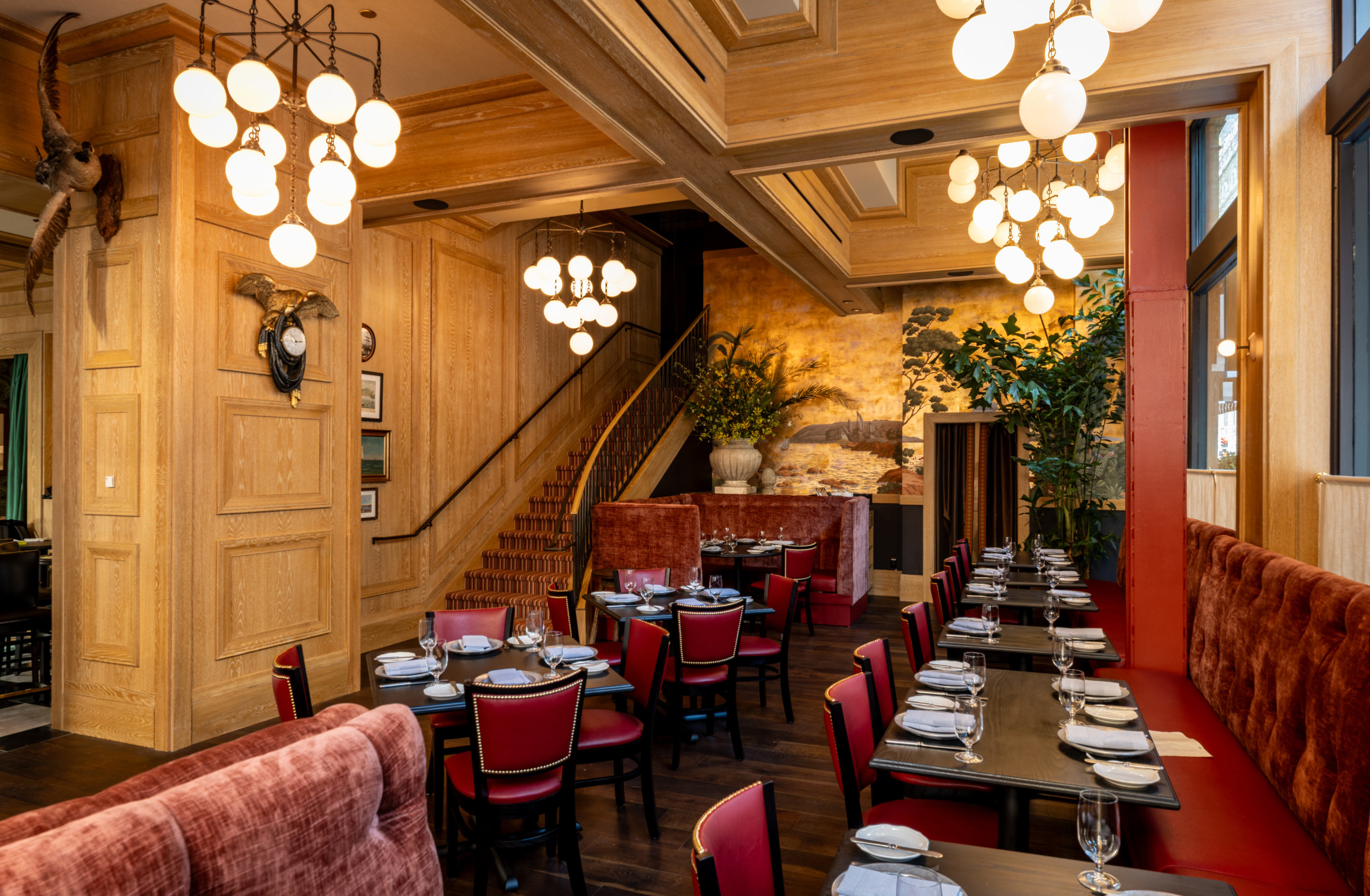
Restaurant operators are drowning in missed calls, overwhelmed staff, and communication gaps that cost real revenue. With over two-thirds of Americans willing to ditch restaurants that don't answer the phone (Hostie AI), the stakes for automated phone systems have never been higher. AI voice agents are no longer a luxury—they're table stakes for survival in 2025's competitive landscape.
The global food service market, valued at $2.52 trillion in 2021 and projected to reach $4.43 trillion by 2028, is experiencing a technological revolution (HospitalityNet). Restaurant operators searching for "compare Hostie AI vs Takeorder vs ResCall for automating phone reservations" need concrete numbers, not marketing fluff. This comprehensive comparison delivers side-by-side pricing tables, feature breakdowns, and total cost of ownership projections that help you defend your purchasing decision to ownership.
We'll examine four leading AI phone systems—Hostie AI, ResCall, Takeorder, and GrubCallAI—through the lens of real-world restaurant operations. Using Hostie's ROI model and industry data, we'll project break-even timelines for both a 120-seat venue and a 40-seat café, complete with actionable checklists to calculate hidden costs like payroll taxes and turnover.
The cost of running an AI voice agent in 2025 is shaped by several core components: Speech Recognition (ASR), Speech Synthesis (TTS), Large Language Model (LLM), Voice Agent Platform, and Telephony (SIP) (Softcery). Understanding these building blocks helps restaurant operators evaluate pricing structures and avoid surprise overages.
Text-to-Speech (TTS) allows voice agents to speak responses in natural-sounding voices, essential for phone-based interactions (Softcery). Key considerations include voice quality, language options, latency, and integration capabilities. For restaurants serving diverse communities, multilingual support isn't optional—it's revenue protection.
Since 2022, AI has become a significant part of every business industry, including restaurants, with the best use cases enhancing marketing, operations, and customer service (Incentivio). The demand for AI chatbots and voice systems has grown significantly in the hospitality sector as operators seek solutions for labor shortages, human errors, and efficiency problems (EnsoConnect).
| Platform | Starter Plan | Professional Plan | Enterprise Plan | Languages Included |
|---|---|---|---|---|
| Hostie AI | $199/month | $399/month | Custom pricing | 20 languages |
| ResCall | $149/month | $299/month | $599/month | 12 languages |
| Takeorder | $179/month | $349/month | $699/month | 8 languages |
| GrubCallAI | $129/month | $279/month | $549/month | 15 languages |
| Platform | Included Minutes (Starter) | Overage Rate | Peak Hour Multiplier |
|---|---|---|---|
| Hostie AI | 1,000 minutes | $0.12/minute | None |
| ResCall | 800 minutes | $0.15/minute | 1.5x |
| Takeorder | 750 minutes | $0.18/minute | 2x |
| GrubCallAI | 900 minutes | $0.14/minute | 1.25x |
Hostie AI stands out with its transparent pricing model—starting at just $199 a month, you can implement AI into your guest communication system without hidden multipliers or peak-hour penalties (Hostie AI). This pricing transparency matters when you're projecting monthly costs for ownership approval.
| Platform | OpenTable | Resy | Yelp Reservations | Hostme | Custom APIs |
|---|---|---|---|---|---|
| Hostie AI | ✅ Native | ✅ Native | ✅ Native | ✅ Native | ✅ Available |
| ResCall | ✅ Native | ❌ Webhook only | ✅ Native | ❌ Not supported | ✅ Available |
| Takeorder | ✅ Native | ✅ Native | ❌ Not supported | ❌ Not supported | ❌ Limited |
| GrubCallAI | ✅ Native | ❌ Webhook only | ✅ Native | ✅ Native | ✅ Available |
| Platform | Toast | Square | Clover | Lightspeed | Micros |
|---|---|---|---|---|---|
| Hostie AI | ✅ Native | ✅ Native | ✅ Native | ✅ Native | ✅ Native |
| ResCall | ✅ Native | ✅ Native | ❌ Webhook only | ✅ Native | ❌ Not supported |
| Takeorder | ✅ Native | ❌ Not supported | ✅ Native | ❌ Not supported | ✅ Native |
| GrubCallAI | ✅ Native | ✅ Native | ✅ Native | ✅ Native | ❌ Not supported |
Hostie integrates directly with the tools you're already using—existing reservation systems, POS systems, and even event planning software (Hostie AI). This seamless integration means no disruption to existing workflows, a critical factor when staff are already stretched thin.
Current Staffing Costs:
Hostie AI Implementation:
Net Annual Savings: $58,380
Break-even timeline: 0.7 months
Hostie now handles over 80% of guest communications automatically for partner establishments, dramatically reducing the burden on front-of-house staff (Hostie AI). For a 120-seat restaurant, this translates to immediate cost savings and improved guest experience.
Current Staffing Costs:
Hostie AI Implementation:
Net Annual Savings: $24,236
Break-even timeline: 1.0 months
Even smaller establishments see substantial returns. The café scenario demonstrates how Hostie's transparent pricing model eliminates the guesswork from budget planning.
Hostie's advantage becomes clear when examining total cost of ownership. The platform's native integrations with major reservation and POS systems eliminate most custom development costs (Hostie AI). Additionally, Hostie's AI, Jasmine, speaks 20 languages fluently, reducing the need for multilingual staff or translation services (Hostie AI).
| Feature | Hostie AI | ResCall | Takeorder | GrubCallAI |
|---|---|---|---|---|
| 24/7 Availability | ✅ Full | ✅ Full | ✅ Full | ✅ Full |
| Multi-channel Management | ✅ Calls, texts, emails | ✅ Calls, texts | ✅ Calls only | ✅ Calls, texts |
| Real-time Menu Updates | ✅ Automatic sync | ❌ Manual only | ✅ Automatic sync | ❌ Manual only |
| Complex Order Modifications | ✅ Full support | ✅ Limited | ❌ Basic only | ✅ Full support |
| Private Event Handling | ✅ Advanced | ❌ Not supported | ❌ Not supported | ✅ Basic |
| Learning Capabilities | ✅ Adapts to regulars | ✅ Basic learning | ❌ Static responses | ✅ Basic learning |
Hostie can handle all kinds of requests: from simple reservation changes to complex private event inquiries and complicated order modifications (Hostie AI). This versatility means one system handles the full spectrum of restaurant guest communications, eliminating the need for multiple point solutions.
AI-driven tools can analyze customer data to offer customized recommendations and tailor marketing messages based on past preferences (Incentivio). Hostie's 20-language capability positions it as the clear leader for restaurants serving diverse communities or tourist destinations.
Language Support Breakdown:
| Phase | Hostie AI | ResCall | Takeorder | GrubCallAI |
|---|---|---|---|---|
| Initial Setup | 2-3 days | 5-7 days | 7-10 days | 3-5 days |
| Menu Integration | 1 day | 2-3 days | 3-5 days | 2-3 days |
| Staff Training | 2 hours | 8 hours | 12 hours | 6 hours |
| Go-Live Testing | 1 day | 2-3 days | 3-5 days | 2 days |
| Total Timeline | 5-7 days | 12-18 days | 18-25 days | 10-14 days |
Hostie's streamlined onboarding reflects its "designed for restaurants, made by restaurants" philosophy (Hostie AI). The faster implementation means quicker time-to-value and less disruption to daily operations.
Hostie AI Support Structure:
The platform's learning capabilities mean Hostie's system adapts to a business's regulars, peak hours, and most popular menu items over time (Hostie AI). This continuous improvement reduces the need for manual adjustments and ongoing maintenance.
Artificial Intelligence is expected to be a game-changer for restaurants in 2024 and beyond, optimizing operations and enhancing customer experiences (AppFront). AI applications in restaurants include AI-powered chatbots for personalized ordering, predictive analytics for inventory management, and algorithms for personalized marketing.
Guest communication represents a significant challenge in the fast-paced restaurant industry, with modern diners expecting quick responses, 24/7 availability, flexibility, and instant access to information (EnsoConnect). Many operators are turning to artificial intelligence to address these challenges, particularly as AI advancements offer solutions for labor shortages, human errors, and efficiency problems.
Hostie was born from this exact challenge. The founders recognized that restaurants had to either change how they managed guest communications or risk missing out on valuable opportunities (Hostie AI). This restaurant-first perspective shows in every aspect of the platform's design and pricing.
Current State Analysis:
Proposed Solution Costs:
Projected Benefits:
"What if the technology fails?"
"What about customer acceptance?"
"How do we measure success?"
Most restaurant personalization currently operates on simple rule-based systems rather than machine learning algorithms (HospitalityNet). However, the industry is rapidly evolving toward more sophisticated AI implementations. When evaluating platforms, consider:
Hostie's recent $4M seed round demonstrates strong investor confidence in the platform's technology and market position (Hostie AI). This funding supports continued innovation and feature development, protecting your investment against obsolescence.
The restaurant technology stack continues to evolve, with new POS systems, reservation platforms, and delivery integrations launching regularly. Hostie's commitment to native integrations rather than webhook-only connections provides more reliable, feature-rich connections that adapt as partner platforms evolve (Hostie AI).
When restaurant operators compare Hostie AI vs. Takeorder vs. ResCall for automating phone reservations, the numbers tell a compelling story. Hostie's transparent pricing, comprehensive integrations, and superior language support deliver the fastest ROI in the industry.
For a 120-seat restaurant, Hostie AI pays for itself in less than one month while providing 24/7 coverage that never calls in sick or quits during the dinner rush. The platform's ability to handle everything from simple reservation changes to complex private event inquiries means one system replaces multiple point solutions (Hostie AI).
The restaurant industry's $4.43 trillion projected market size by 2028 will be won by operators who embrace technology while maintaining the personal touch that defines hospitality (HospitalityNet). Hostie AI bridges this gap by automating routine communications while seamlessly handing off complex requests to human staff.
Starting at just $199 a month, implementing AI into your guest communication system has never been more accessible or necessary (Hostie AI). The question isn't whether to automate—it's whether you can afford not to.
With over two-thirds of Americans willing to abandon restaurants that don't answer the phone, the cost of inaction far exceeds the investment in AI automation (Hostie AI). Hostie AI offers the most comprehensive, cost-effective solution for restaurants ready to future-proof their guest communications in 2025 and beyond.
Restaurant AI phone system costs are shaped by several core components: Speech Recognition (ASR), Text-to-Speech (TTS), Large Language Model processing, voice agent platform fees, and telephony infrastructure. Additional factors include call volume, integration complexity with existing POS systems, and multilingual capabilities.
According to Hostie AI research, over two-thirds of Americans would abandon restaurants that don't answer the phone, making missed calls a significant revenue risk. AI phone systems provide 24/7 availability, reduce labor costs, and can increase total sales by up to 17% through improved customer service and order management.
Key features to evaluate include integration with major reservation systems and POS platforms, multilingual support (Hostie's AI Jasmine speaks 20 languages), 24/7 call handling capabilities, and comprehensive communication management covering calls, texts, emails, reservations, and orders. Consider voice quality, response latency, and scalability for your restaurant size.
AI voice agent costs scale based on usage patterns, with pricing typically structured around call minutes, monthly subscriptions, or transaction-based models. Smaller restaurants benefit from basic packages, while high-volume establishments need enterprise solutions with advanced analytics, custom integrations, and priority support.
Restaurants using AI phone systems report significant ROI through reduced labor costs, eliminated missed calls, improved order accuracy, and enhanced customer satisfaction. The technology addresses critical challenges like labor shortages and human errors while providing 24/7 availability that modern customers expect.
Modern restaurant AI systems like Hostie integrate seamlessly with major reservation platforms and leading POS systems, enabling unified management of bookings and orders. This integration eliminates data silos, reduces manual entry errors, and provides comprehensive analytics across all customer touchpoints for better decision-making.
RELATED


